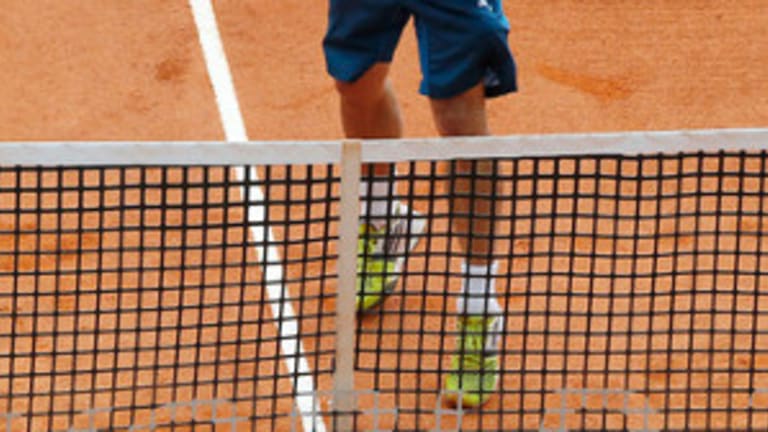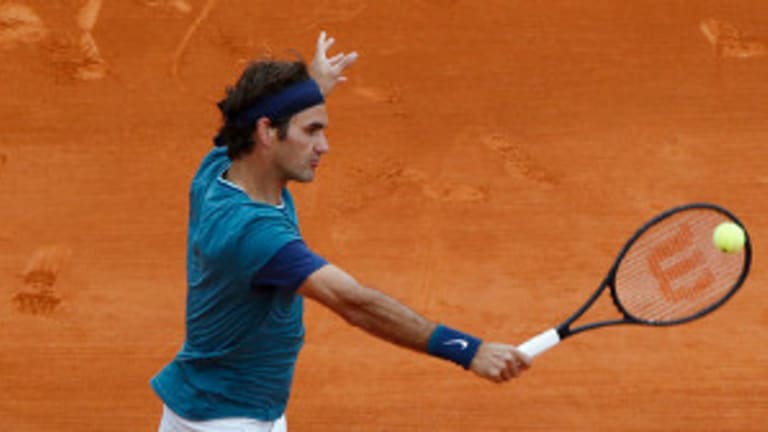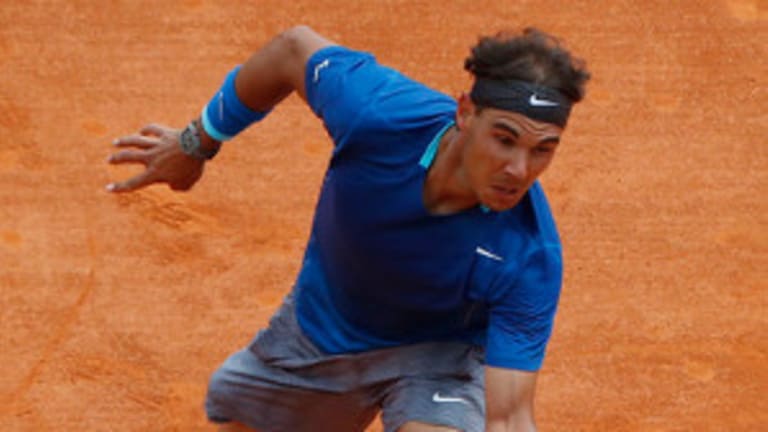If you were watching when Rafael Nadal was down 1-3 and a break point to Teymuraz Gabashvili today, would you have predicted that it would be Gabashvili, not Nadal, who would win just two more games?
Yeah, you probably would have. And that’s how it went. The 28-year-old Georgian came out firing, and then, as often happens against Rafa, he started misfiring. Nadal began his turnaround with a volley winner to save break point at 1-3, and he played well after that, finishing with 25 winners, seven errors, and a first-serve percentage of 77.
Not everything went smoothly, though. Nadal was called for two time violations, the second of which meant he lost a first serve. When he went on to lose that point, Rafa wagged his finger at umpire Pascal Maria and later said that, while he knows he needs to be quicker, these violations weren’t deserved because they came after long rallies.
Rafa has reacted to time violations this way before. He says he accepts the fact that he needs to be faster, but he has a harder time accepting those occasions when the rule that’s designed to make him faster is actually enforced. I agree with Nadal that umpires should use their discretion. And, because there’s no clock on the court, I also agree that they should give the players a pre-warning. Through the first set, though, Nadal was averaging 27 seconds between points, so he had gone over the 25-second limit more than once or twice. In the other cases, Maria did use his discretion.
Nadal, who has sped up over the years, says he understands that he’s still too slow. Yet he can’t seem to live with the fact that, any time he goes over the limit, it’s possible that he’s going to get a warning or a violation. One of Nadal’s strengths is his ability to accept that adversity is inevitable on a tennis court. You never see him smash a racquet, and you rarely see him argue a call or throw his hands in the air when he gets a bad bounce, as if to say, “Why me?" or "It’s all so unfair.” If he wants to put the time violations behind him, the first step is for him to stop believing that the ones he gets are unfair.
Next Up: Andreas Seppi. Nadal leads their head-to-head 4-1.


